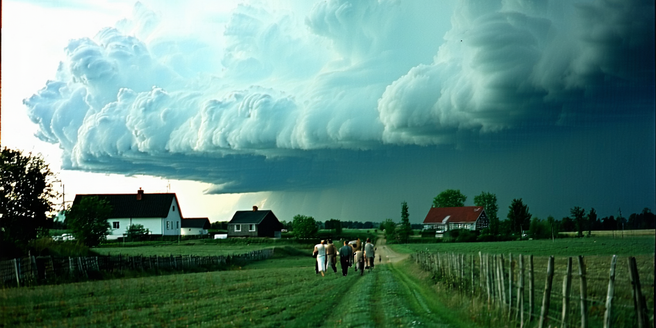
Understanding Weather Alerts and Their Importance
Weather alerts play a crucial role in preparing and protecting individuals and communities from natural disasters. Understanding these alerts—whether it’s a severe thunderstorm, tornado, or hurricane warning—enables people to take necessary precautions. Meteorological agencies issue alerts based on scientific data and predictions to ensure public safety. By paying attention to these notifications, communities can reduce the risk of injury and damage to property. Recognizing different levels of alerts, such as watches, warnings, and advisories, helps tailor responses and actions effectively. Being informed and prepared not only contributes to personal safety but also strengthens community resilience in face of unpredictable weather events.
Top Features to Look for in Weather Alert Apps
When choosing a weather alert app, certain features are essential for comprehensive utility and peace of mind. Real-time notifications ensure you receive updates as soon as the meteorological conditions change. Geolocation capabilities allow the app to provide alerts specific to your current location. Customizable alerts let users select which types of weather warnings are most relevant to their needs. Integration with a reliable weather radar can offer visual data that enhances understanding of the forecast. User-friendly interfaces make navigation easy, providing clear and concise alerts. Offline functionality ensures that critical information is accessible even without an active internet connection, a potentially lifesaving feature during severe conditions.
User-Friendly Weather Alert Apps
User-friendly weather alert apps are vital to ensuring that users can easily access and understand critical information during adverse weather conditions. A clear and intuitive interface allows users to navigate swiftly and find necessary data without confusion. Simplified layouts with easily recognizable icons and straightforward language improve accessibility for users of all ages. Push notifications should be easy to configure, enabling users to receive timely and relevant alerts customized to their preferences. Additionally, providing straightforward tutorials or guides within the app can assist new users in utilizing the service effectively. By simplifying the user experience, these apps empower individuals to respond quickly and make informed decisions in response to weather changes.
Comparing Free vs. Paid Weather Alert Apps
Deciding between free and paid weather alert apps often depends on the user’s needs and the functionality provided. Free apps usually cover basic features like standard alerts and forecasts. However, they may contain ads and have limitations regarding the customization of alerts. On the other hand, paid apps typically offer advanced features such as ad-free experiences, detailed radar views, and enhanced customization options. Moreover, paid apps might offer more frequent updates and customer support for troubleshooting issues. Assessing the features you prioritize can guide you in choosing an option that balances cost with the level of service and support you require for optimal weather preparedness.
Integrating Weather Alerts for Community Safety
Efficient integration of weather alerts for community safety involves collaboration among various stakeholders, including meteorological services, local governments, and communication networks. By developing robust systems that disseminate alerts quickly and accurately, communities can ensure timely responses to severe weather. Public education campaigns about interpreting and responding to alerts enhance overall resilience. Community alert systems, such as sirens or local broadcasts, reinforce digital notifications, ensuring widespread reach. Collaboration with schools, businesses, and local services ensures coordinated action plans are in place. By fostering a culture of preparedness and leveraging technology effectively, communities can mitigate risks associated with extreme weather events and safeguard public well-being.
The Future of Weather Alert Technology Trends
The future of weather alert technology is poised to become more advanced and granular, providing even greater precision and reliability in alerts. Innovations in artificial intelligence and machine learning promise to enhance prediction models, allowing for earlier and more accurate warnings. Internet of Things (IoT) devices could enable more localized and specific alerts based on real-time environmental data. Additionally, increased integration with smart home and wearable technology will enable weather alerts to seamlessly become part of daily life. Advancements in communication methods, such as 5G, promise faster and more reliable delivery of alerts. As these trends evolve, they will shape a future where weather preparedness is an integrated aspect of everyday living.
